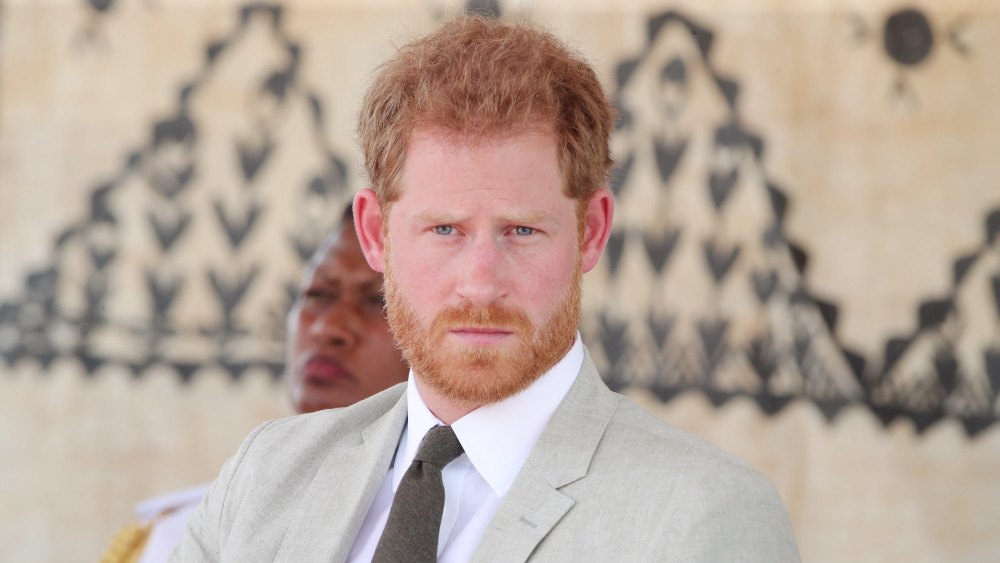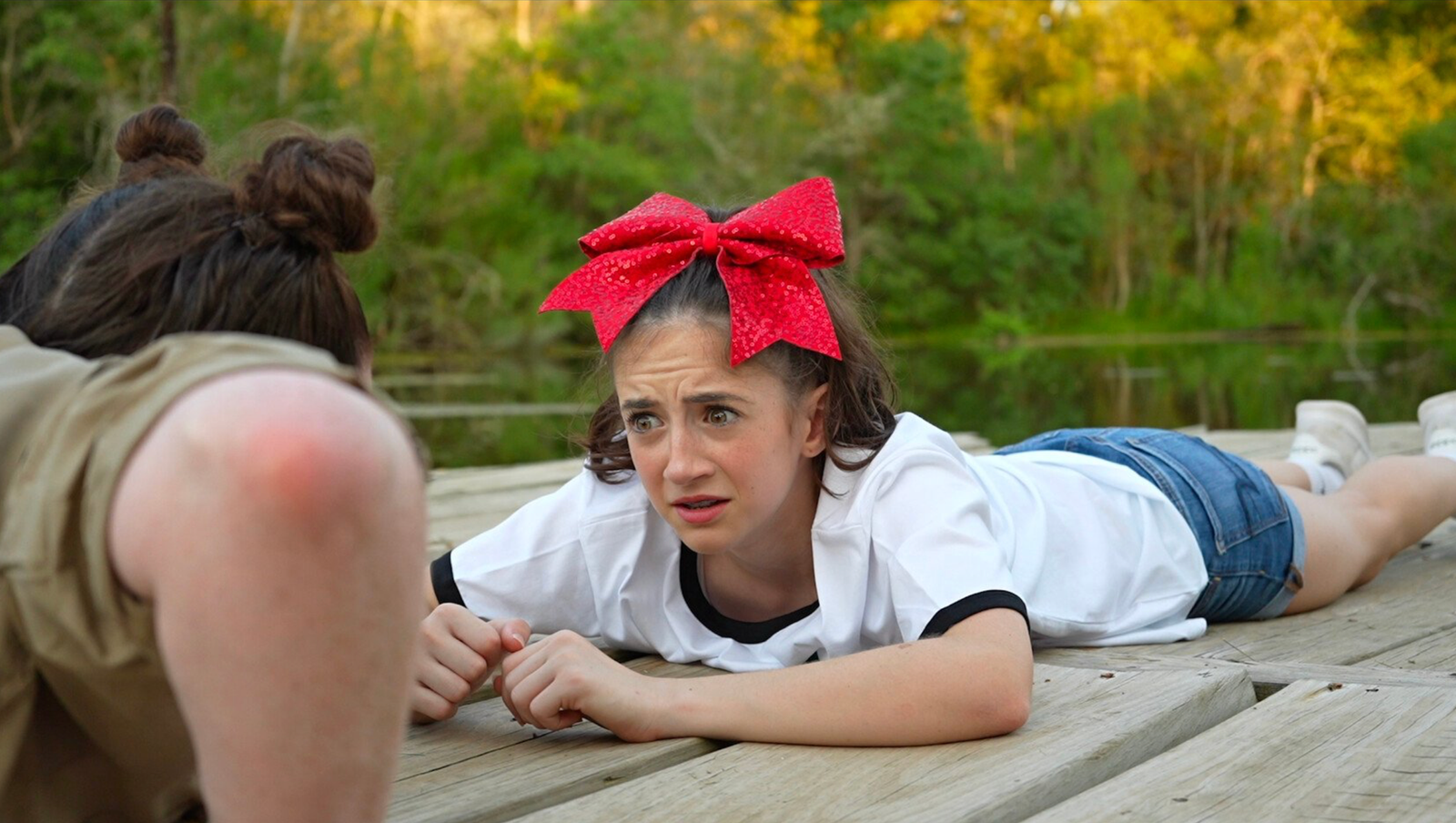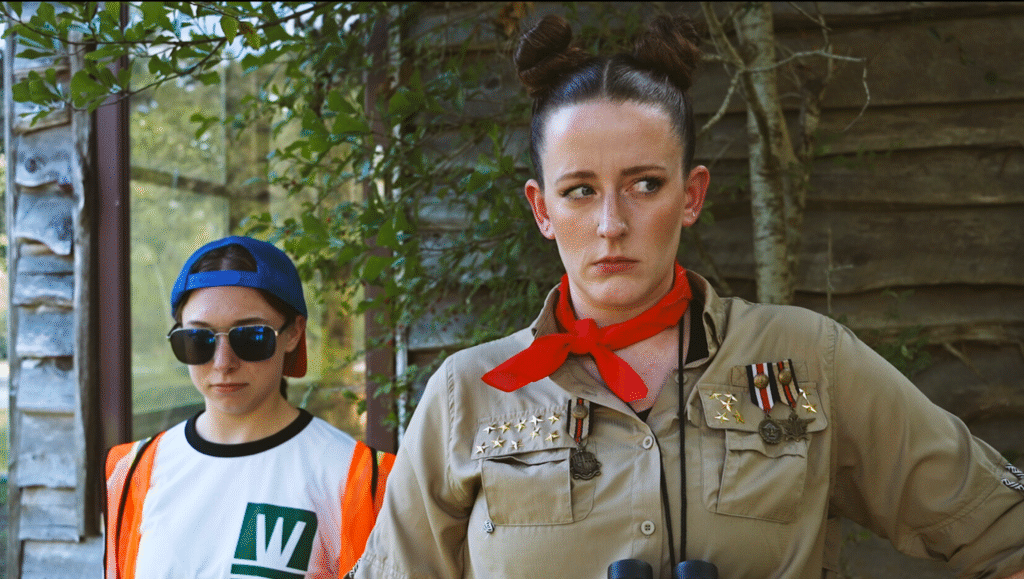Entertainment
Royal Expert ‘Can’t Imagine’ Harry Joining Royals to Mark Queen’s Death on August 13, 2023 at 5:00 pm Us Weekly

The royal family is still fine-tuning their plans to commemorate the September anniversary of Queen Elizabeth II’s death, but royal expert Gareth Russell cannot imagine Prince Harry will be part of the occasion.
“We don’t know if the invitation was sent out. I would be quite surprised if [Harry and his wife, Meghan Markle] would’ve accepted it,” Russell exclusively told Us Weekly on Thursday, August 10, while promoting his new book THE PALACE: From the Tudors to the Windsors, 500 Years of British History at Hampton Court. “We know that they had declined the invitation [to visit] when Elizabeth was still alive. So, I can’t imagine them saying yes to an invitation now for no other reason than nothing really has changed in the dynamic in this family.”
The author added: “Prince Harry allegedly still wants and expects a full apology [and] ‘Recollections may vary,’ continues to be the royal’s perspective on things as much as we can tell. So no, I suppose we’ll find out one way or the other someday, whether they were invited, but I would be stunned if they had said yes and went to it.”
A source previously told Us on Wednesday, August 9, that King Charles III and Prince William were still planning how they’ll mark the anniversary of Her Majesty’s death. “The wounds still feel fresh and it’s been hard for them to find a way for a celebration that will match the gravitas the queen exuded,” the insider said. “On September 8 there will be some acknowledgment or event, [but] the details are still being ironed out.”
The source added that Charles, 74, would likely “reflect in solitude” with wife Queen Camilla, and that, if there was an official event, Harry, 38, and Meghan, 42, were unlikely to attend.
Prince Harry. Matt Baron/Shutterstock
Buckingham Palace announced in September 2022 that the late queen had died at the age of 96. Following a mourning period across the United Kingdom, the royals came together for her state funeral later that month. Charles, who assumed the throne immediately after Elizabeth’s death, was joined at the service by his three siblings: Princess Anne, Prince Andrew and Prince Edward. The king’s two sons — William, 41, and Harry — both attended and even walked side-by-side in the official funeral procession. Charles’ two children with late ex-wife Princess Diana have been at odds since 2020, shortly before Harry and Meghan chose to take a step back from their duties as senior royals.
Harry and Meghan have since detailed their royal drama in their self-titled Netflix docuseries and the duke’s Spare memoir. Harry’s book, which was published in January, featured several bombshell allegations about Charles, Camilla, William and Princess Kate.
While the royals have not publicly addressed any of the allegations, a second source exclusively told Us in January that the Firm’s relationship with Harry has been “torn to shreds.”
“I don’t think we’ll see a great deal of interaction between the Sussexes and the rest of the royal family for quite some time,” Russell noted on Thursday. “I can’t think of a really big royal event that’s coming up in the next couple of years. There’s obviously no coronation, no wedding — as far as we know — [and] no christenings. Even those really big events were not enough to completely reunite the family. We didn’t see all of the Sussexes at the coronation.”
While Harry attended his father’s crowning ceremony in May, Meghan and their two children — Prince Archie, 4, and Princess Lilibet, 2 — stayed home to celebrate Archie’s birthday. Harry even left the coronation, which fell on Archie’s big day, shortly after the ceremony ended.
“The next time we see all of them together could be when there is a big attempt at a successful bridge building, or really unfortunately, the next time we could see them all together is another funeral,” Russell added.
With reporting by Christina Garibaldi
The royal family is still fine-tuning their plans to commemorate the September anniversary of Queen Elizabeth II’s death, but royal expert Gareth Russell cannot imagine Prince Harry will be part of the occasion. “We don’t know if the invitation was sent out. I would be quite surprised if [Harry and his wife, Meghan Markle] would’ve
Us Weekly Read More
Entertainment
Selling Your Soul in Hollywood: The Hidden Cost of Fame

By all appearances, Hollywood is a dream factory — a place where charisma, talent, and luck collide to create stars. But behind the camera lights and red carpets lies a conversation few inside the industry speak openly about: the spiritual and moral price of ambition.

For actor Omar Gooding, the idea of “selling your soul” in Hollywood isn’t a metaphor — it’s a moral process that begins with tiny compromises. In an October 2025 interview, Gooding explained that no one in Hollywood makes a literal deal with the devil. Instead, it’s the quiet yeses, the moments when comfort overrides conviction, that mark the beginning of the trade. “They don’t say, ‘Take this or you’ll never make it,’” he said. “They just put it in front of you. You choose.”
Those choices, he argues, create a pattern. Once you show that you’ll accept something you once resisted, the industry notices. “Hollywood knows who it can get away with what,” Gooding said. “One thing always leads to another.” The phrase “selling your soul,” in this context, means losing your say — doing what you’re told rather than what you believe in.
That moral tension has long shadowed the arts. Comedians like Dave Chappelle, who famously walked away from millions to preserve his creative integrity, often serve as examples of where conviction and career collide. In resurfaced interviews, Chappelle hinted that he felt manipulated and silenced by powerful figures who sought control of his narrative, warning that “they’re trying to convince me I’m insane.”
This isn’t just about conspiracy — it’s about agency. Hollywood runs on perception. Performers are rewarded for being agreeable, moldable, entertaining. Those who question the machine or refuse the script risk exile, while those who conform are elevated — sometimes beyond what they can handle.
“We see the ‘collections’ all the time,” Gooding explained. “When the bill comes due, you can tell. They made that deal long ago.”

But the story doesn’t end in darkness. Gooding also emphasizes that in today’s entertainment landscape, artists have more control than ever. With streaming, social media, and creator‑driven platforms, performers don’t have to “play the game” to be seen. Independent creators can build their own stages, speak their own truths, and reach millions without trading authenticity for access.
Still, the temptation remains — recognition, validation, quick success. And every generation of artists must answer the same question: What are you willing to do for fame?
As Gooding put it, “You just make the best choices you can. Because once it’s gone — your name, your peace, your soul — there’s no buying it back.”
Entertainment
California Bans AI Clones from Replacing Real Talent

California just made a dramatic stand for human creativity, defeating the threat of AI actor clones with a sweeping new law that puts people—not algorithms—back in the Hollywood spotlight. With the stroke of Governor Gavin Newsom’s pen in October 2025, the state has sent a clear message to studios, tech companies, and the world: entertainment’s heart belongs to those who create and perform, not to digital facsimiles.
California Draws a Hard Line: No More AI Clones
For months, the entertainment industry has been divided over the use of artificial intelligence in filmmaking. Studios, lured by promises of cost-cutting and creative flexibility, have invested in software that can mimic an actor’s face, voice, and even emotional range. But for performers, this wave of synthetic reproduction has triggered alarm—encouraged by chilling stories of deepfakes, unauthorized digital doubles, and contracts that let studios reuse a star’s likeness indefinitely, sometimes without pay or approval.
The new California law, anchored by AB 2602 and AB 1836, changes everything:
- Every contract must explicitly detail how studios can use digital replicas or voice models, preventing once-common “blank check” agreements that overlooked this risk.
- No one—not studios nor streaming giants—can create or release AI-generated clones of an actor, living or dead, without clear, written consent from the performer or their estate.
- The law gives families new powers to defend loved ones from posthumous deepfake exploitation, closing painful loopholes that once let virtual versions of late icons appear in new ads, films, or games.
Actors Celebrate a Major Victory
The legislation rides the momentum of the recent SAG-AFTRA strike, where real-life talent demanded control over their own digital destinies. Leaders say these protections will empower artists to negotiate fair contracts and refuse participation in projects that cross ethical lines, restoring dignity and choice in an industry threatened by silent algorithms.
Stars, unions, and advocacy groups are hailing the law as the most robust defense yet against unwanted AI replications.
As one actor put it, “This isn’t just about money—it’s about identity, legacy, and respect for real artists in a synthetic age.”
A New Chapter for the Entertainment Industry
California’s move isn’t just a victory for local talent—it’s a warning shot to studios everywhere. Companies will now be forced to rethink production pipelines, consult legal counsel, and obtain proper clearance before digitally cloning anyone. Global entertainment platforms and tech developers will need to comply if they want to do business in the world’s entertainment capital.

These laws also set a template likely to ripple through other creative fields, from musicians whose voices can be synthesized to writers whose work could be mimicked by generative AI. For now, California performers finally have a powerful shield, ready to fight for the right to shape their own public image.
Conclusion: Human Talent Takes Center Stage
With its no-nonsense ban on AI actor clones, California draws a bold line, championing the work, likeness, and very humanity of its creative stars. It’s a landmark step that forces the entertainment industry to choose: respect real talent, or face real consequences. The age of the consentless digital double is over—human performers remain the true source of Hollywood magic.
Entertainment
Chaos and Comedy: Darby Kingman’s “Camp Wackapoo: Rise of Glog”

Darby Kingman’s “Camp Wackapoo: Rise of Glog” redefines summer camp comedy with a wild, energetic story about ambition, chaos, and the joy of embracing the unexpected. The film centers on a relentlessly competitive camp counselor who’s determined to finish first—only to face a motley crew of unruly campers and a summer unlike any other.
As Darby puts it, “Not everything is that deep. It really honestly was to make people laugh. She has all these kids that are not working with her and she’s just losing her mind. It’s crazy, silly, goofy, and it was a blast.”
What started as a simple scene for Darby’s acting reel evolved into a full-fledged film with encouragement from her mentor at Debbie Reynolds Acting School. Darby dove into every role—writing, directing, starring, and meticulously preparing each prop and costume. “Plan and prepare, but also be flexible and ready to be in the moment—that’s when the magic happens,” she advises.
Working with a handpicked cast of her own dance students, Darby built an atmosphere of real teamwork and camaraderie. She credits the “precious” energy of her young cast, her creative director of photography, and the overall spirit of her production team for turning the project into something bigger than herself. Her experience is an inspiring blueprint for indie filmmakers:
“Take initiative and control of your career. You can’t just sit around and wait for somebody to pick you. Figure out what you’re good at and go for it. Create something that brings joy to others.”

Her production motto? “Preparation is key, but you have to be ready to go with the flow—that’s when the magic happens.” Darby’s fearless creativity, focus on collaboration, and love for comedy shine throughout “Camp Wackapoo: Rise of Glog.” It’s more than just a camp satire—it’s a heartfelt testament to hard work, original humor, and leadership from the ground up: “People need to laugh right now. That’s a win.”
Catch “Camp Wackapoo: Rise of Glog” and experience Darby’s infectious energy and comic genius at the Deluxe Theatre on November 1, 2025. Get your tickets now at Houstoncomedyfilmfestival.com.

 Business4 weeks ago
Business4 weeks agoDisney Loses $3.87 Billion as Subscription Cancellations Surge After Kimmel Suspension

 Entertainment4 weeks ago
Entertainment4 weeks agoWhat the Deletion Frenzy Reveals in the David and Celeste Tragedy

 Entertainment4 weeks ago
Entertainment4 weeks agoExecutive Producer Debut: How Celia Carver Created Festival Hit ‘Afterparty’

 Health4 weeks ago
Health4 weeks agoRussia Claims 100% Success With New mRNA Cancer Vaccine

 News4 weeks ago
News4 weeks agoBody of Missing Teen Found in Tesla Linked to Musician D4vd

 Business3 weeks ago
Business3 weeks agoWhy Are Influencers Getting $7K to Post About Israel?

 Health4 weeks ago
Health4 weeks agoWhy Did Gen Z QUIT Drinking Alcohol?

 Advice4 weeks ago
Advice4 weeks agoHow AI Is Forcing Everyone Into the Entrepreneur Game






























